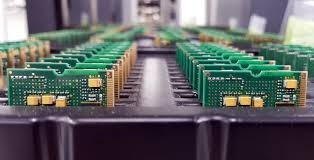Circuit board assembly is at the heart of every modern electronic product. It is the process that transforms a bare printed circuit board into a functional electronic board by attaching and soldering components. This guide explains the fundamentals of circuit board assembly, common techniques, and how to ensure high-quality, cost-effective production.
What Does Circuit Board Assembly Mean?
Circuit board assembly refers to the process of placing electronic components onto a printed circuit board (PCB) and forming secure electrical connections through soldering. The final product, often called a printed circuit board assembly (PCBA), can then be integrated into a complete device.
The assembly process is critical in determining the performance, durability, and reliability of electronic products.
Circuit Board Assembly Methods
Different technologies are used in circuit board assembly depending on design and application needs:
Surface Mount Technology (SMT)
SMT is the most widely used method. Components are placed directly onto the board’s surface and soldered using reflow ovens. This method supports compact, high-density designs.
Through-Hole Technology (THT)
THT involves inserting component leads through holes in the board and soldering them on the opposite side. It offers stronger mechanical connections, making it suitable for harsh environments and high-power applications.
Mixed Assembly
Many boards combine both SMT and THT, especially in complex or high-reliability designs, to leverage the strengths of both technologies.
Typical Circuit Board Assembly Process
A standard circuit board assembly workflow includes:
- Solder paste application — Solder paste is applied to component pads using a stencil printer.
- Component placement — Automated pick-and-place machines position components precisely.
- Soldering — SMT components are soldered via reflow soldering; THT parts may use wave or selective soldering.
- Inspection and testing — Automated optical inspection, X-ray inspection, and functional testing ensure assembly quality.
- Cleaning and protection — Boards are cleaned of flux residues, and protective coatings may be applied as needed.
Why Circuit Board Assembly Quality Is Critical
Circuit board assembly quality directly affects:
- Device reliability — Faulty soldering or misaligned components can lead to failures in the field.
- Product lifespan — High-quality assembly extends the life of electronic products.
- Compliance — Many industries (automotive, medical, aerospace) require adherence to strict assembly standards.
Common issues that can arise from poor assembly include cold solder joints, solder bridges, voids, and component damage.
Applications of Circuit Board Assembly
Circuit board assemblies are used in virtually every type of electronic product, such as:
- Smartphones and consumer gadgets
- Automotive electronic control units
- Industrial automation systems
- Medical devices and instruments
- Networking and communication equipment
- Wearable and IoT devices
How to Choose a Circuit Board Assembly Provider
When selecting a circuit board assembly partner, key factors to consider include:
- Experience with your product type — Can they handle your board’s complexity and specifications?
- Certifications — Look for ISO 9001, IATF 16949, ISO 13485, or other relevant certifications.
- Equipment and technology — Ensure they use advanced machinery for placement, soldering, and testing.
- Component sourcing — The use of genuine, traceable components is vital for reliability.
- Quality control systems — Strong inspection and testing processes reduce the risk of defects.
Final Thoughts
Circuit board assembly is where precision engineering meets practical manufacturing. From simple consumer electronics to mission-critical industrial systems, the quality of your assembly process determines your product’s success. By understanding the process and selecting the right assembly partner, you can ensure your electronic devices meet the highest standards of performance and reliability.

